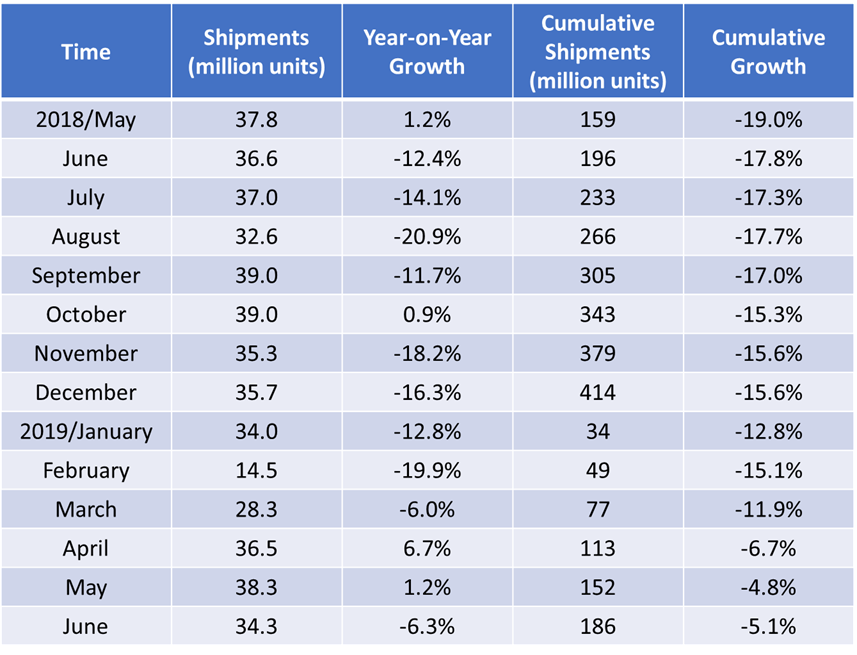The Chinese smartphone market between January and June 2019
August 12, 2019
By Daniel Choi
_________________________________________________________________________________________________________________________________________________
A market with signs of oversaturation
Despite the massive sales figures in the Chinese smartphone market, data compiled from the smartphone market revelaed that the market is oversaturated to the point where negative growth has plagued the market for almost an entire year. While sales volumes continue to be recorded in millions, growth rates have still not pulled out of negative figures, a trend that has continued since 2018. Chinese smartphone brands continue to be the brands of choice for most consumers however, with the 'Big Four' smartphone brands continuing to assert dominance over the Chinese smartphone market.
Slowing sales and recessions

As shown in the above figure, the Chinese smartphone market has not seen significant growth since May 2018, with shipments mostly varying between 32 and 39 million units with the notable exception of February 2019, where shipments were as low 14.5 million units. While the market briefly saw positive year-on-year growth in April and May, these figures turned negative in June once more. Cumulative growth for June 2019 displayed a -5.1% decrease over the previous year, where 196 million units were sold between January and June 2018, whereas cumulative shipments between January and June 2019 failed to break 190 million units.
Industry data and key segments

The above figure indicates that the number of new models in 2019 has seen a substatial decrease as well. The number of new models released in 2019 were notably at their lowest in June with only 38 models released that month, a 48.6% decrease over the previous year. Cumulative new models between January and June have also seen a massive decrease in 2019, with new models failing to break 250 and cumulative growth currently at a low of -38.0%. Cumulative growth in 2019 has been substantially lower than the same period in 2018, with growth figures failing to make a reversal.